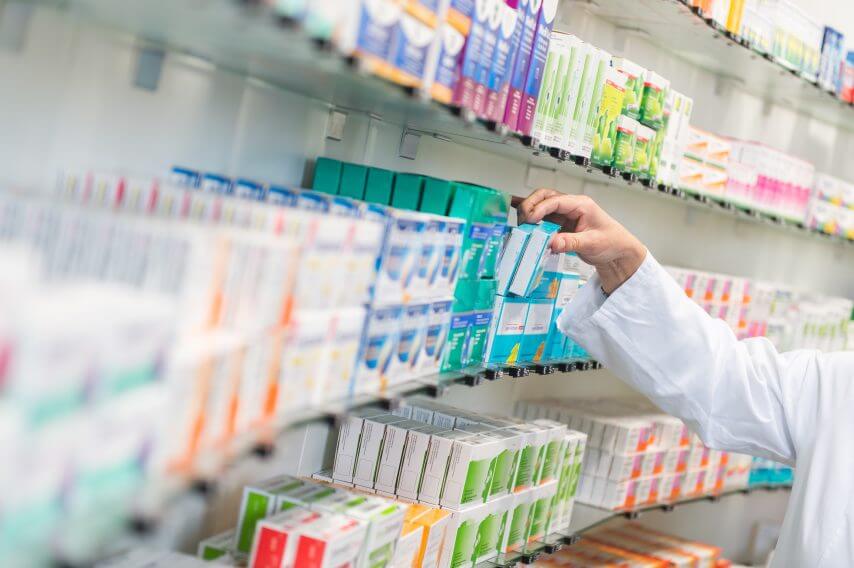Headache, throat, heartburn … People who have the reflex of non-prescription drugs can pay dearly, as prices have exploded in 10 years. Details.
It must have been a means of relieving the French portfolio. But since the authorization for pharmacies to sell certain drugs in open access , the expected goal is not there.
In a report published by Familles Rurales Tuesday, April 16, 2019, the association points to a surge in the prices of some non-prescription drugs, associated with a lack of information participating in “a tariff jungle”.
Prices that fly away
In 2008, the government authorized by decree the over-the-counter sale of over-the-counter drugs , to “offer competitive public prices and improve the purchasing power of citizens,” recalls Familles Rurales in its Observatory of Drug Prices 2018 .
10 years later, the report made by the association is without appeal: “prices have gone.” Since 2010, the average “basket” of open access medicines purchased by families has increased by 9%.
To carry out the survey, 34 watchers identified, between September and October 2018, the prices of 14 frequently used products (12 drugs and two non-drug specialties), in 84 pharmacies, pharmacies or websites, in 37 departments.
With prices that have exploded, like that of Nurofen, which has increased by 25% in 8 years, Strepsil (up 19%) or Maalox which has increased by 12%.
At these prices are added two successive increases in VAT : from 5.5 to 7% in 2012, then from 7 to 10% in 2014.
Read also: Drugs soon on sale in supermarkets?
Considerable price differences
Another data to take into account, the online sale of drugs, authorized since 2013, which contributes to this “tariff jungle”. Famille Rurales points to price differences for the same drug of the order of one to two or even three times, depending on a purchase in pharmacy or on the Internet.
Thus, a tube of Activir can be bought between 2.99 and 9.20 euros in pharmacy, and between 2.49 and 6.66 euros on the Internet, a difference of 269% between the lowest price and that the higher.
The same goes for the Nurofen, whose lowest price is 1.89 euros on the internet, and the highest of 5.50 euros in pharmacies, a gap of 190%.
The drug with the lowest price difference is Voltarenactigo, with a minimum internet price of 4.41 euros and 7.90 euros in pharmacies, a difference of “only” 79%.
The report underlines that we must not forget to take into account the shipping costs for online purchases, which are on average 6.15 euros per order.
Lack of information
For the consumer, impossible to navigate and compare with the competition before buying, according to Familles Rurales, who denounces “inaccessible and / or illegible prices”, including boxes, but not only:
“75% of the boxes are unlabelled, half of the drugs are on displays located behind the counter of pharmacists.”
The report also shows that only 39% of pharmacists “systematically issue a receipt”, a useful element for a comparison of prices after purchase.
Lack of transparency
For Dominique Marmier, President of Rural Families, the goal of 2008 was yet clear: put drugs in open access, in front of counters, and label each box with the price. To explain why this is not done, pharmacy professionals tell him their reasons, he says :
“These are often the same: it is difficult to negotiate prices with the pharmaceutical companies, which are rain and shine.”
In order to have a trading margin, pharmacies can group together into a purchasing group. “The more they are in a buying group, the more they can negotiate. However, there are nevertheless large volumes in France of pharmacies that are part of purchasing groups ”
If he recognises that it is more difficult for some “small pharmacies”, Dominique Marmier believes that it is “very hard to make things happen”.
Drugs, “products at risk”
On the Internet, the problem also lies in the lack of information. Rural families recalls:
“Medicines are risky products and not everyday consumer products, they require information prior to purchase.”
Via the Internet, the consumer should systematically fill out or update a health questionnaire, before confirming his order, but “30% of sites do not offer it”.
“One third of sites do not care about the impact of the products they sell on the health of their patients.”
The patient should also consult the package leaflet before confirming the order, but “46% of the sites still do not require it on all the medicines on offer”. “The online sale should be subject to a special framework ensuring the best possible support for patients,” suggests the association.
It calls on the Directorate-General for Consumption, Competition and Fraud Control to launch an investigation into these practices, and to take the necessary sanctions against professionals who do not respect “the law of consumption”. nor that of patients to have intelligible and accessible information.
A website to learn more?
For obvious health reasons, it is therefore recommended to always check the information on purchased medicines. A tip asked to a pharmacist will allow to see more clearly.
“It may also explain that in some pharmacies, it’s a bit more expensive, because there is the advice of a professional. And there are many in pharmacy to do their job very well.”
However, before buying, do not hesitate to inquire about the prices, to make an informed choice.
To help the patient-consumer, the Federation of Pharmaceutical Trade Unions of France is planning to launch a dedicated website www.lepharmacien.fr in the course of 2019 , on which will be available the “medication sheets with price differences”.
And reminds that “the French pharmacy must respect the regulations on the display of prices”. A commitment that Rural Families will follow closely.




